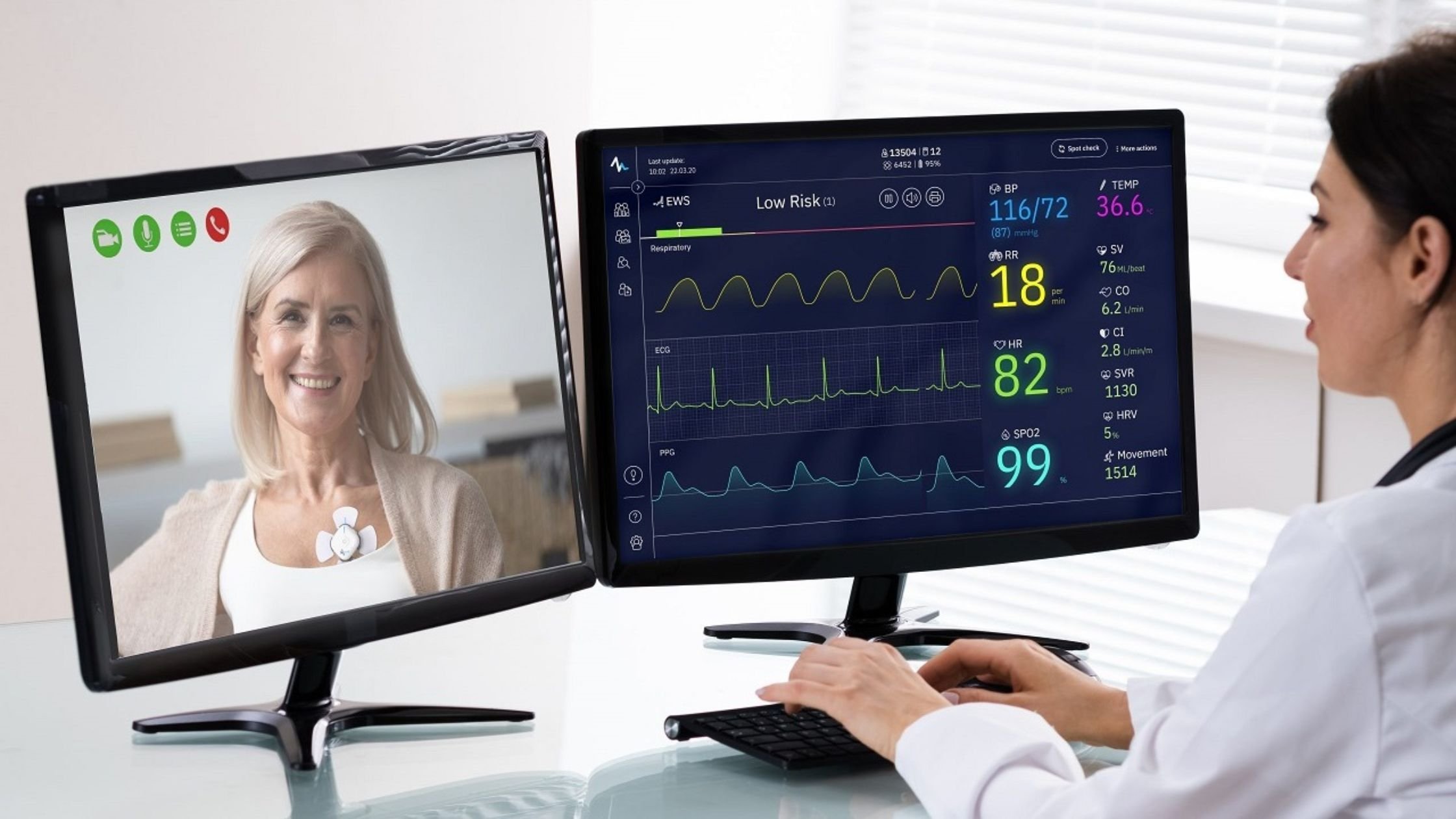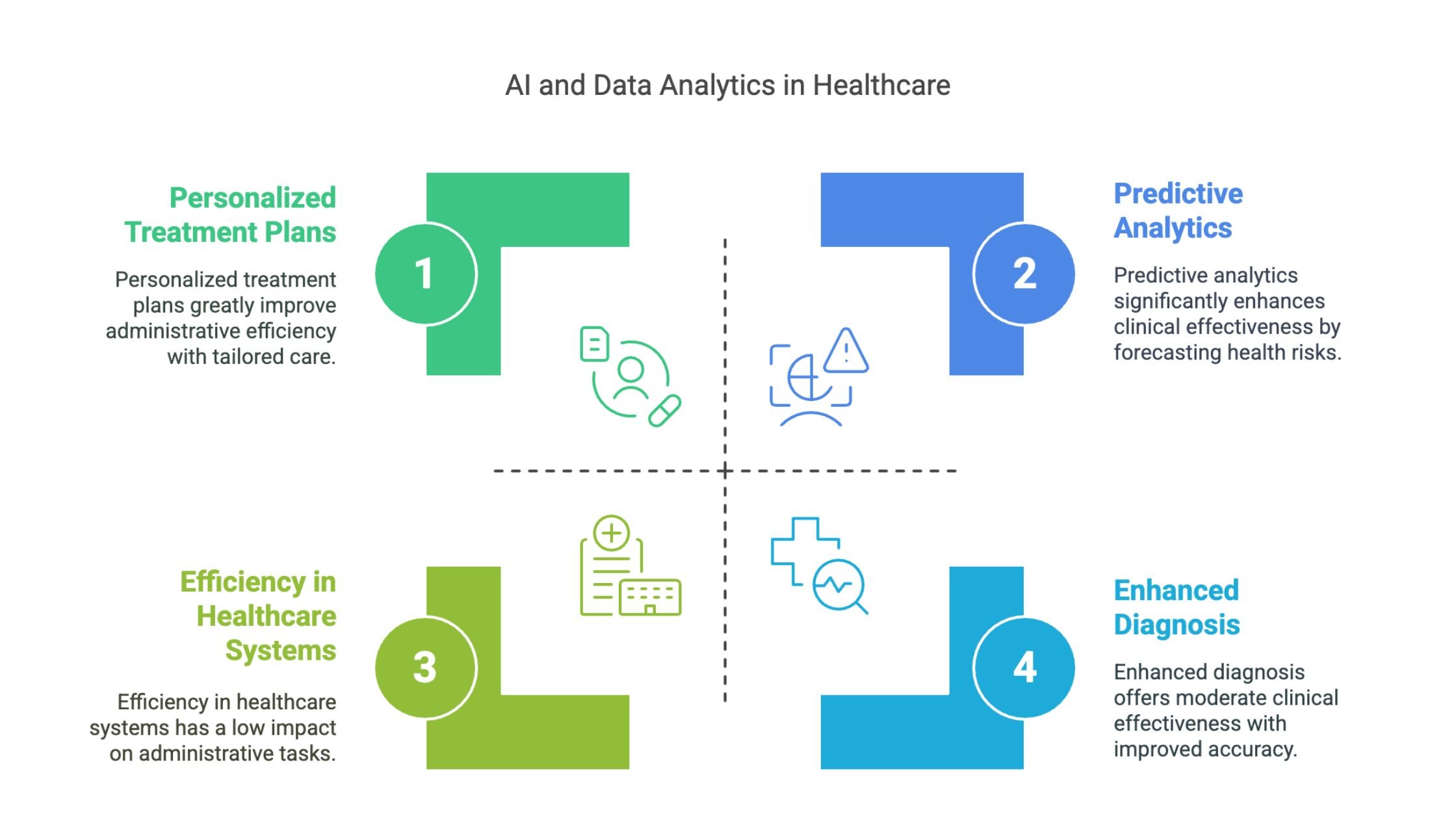How Technology Is Changing the Way We Monitor Health
The fast-paced technological progress has transformed numerous sectors including healthcare. The ongoing evolution of technology leads to better health monitoring systems which provide more efficient and accessible personalized healthcare solutions. The Internet of Things (IoT) together with artificial intelligence (AI) and data analytics and remote patient monitoring and mobile health apps transform healthcare by enabling better health metric tracking and disease prediction and improved patient results. This blog examines the emerging role of these technologies in healthcare monitoring systems.
Related Blog: What Is Medical Monitoring and Why Does It Matter?
IoT in Healthcare
The Internet of Things (IoT) is a revolutionary technology that links all sorts of devices to the internet, enabling them to gather and exchange data. In healthcare, IoT has made it possible to create various devices and sensors that track patients’ health in real time, thus enhancing both diagnosis and treatment.
Key Benefits of IoT in Healthcare:
Real-time Monitoring: The Internet of Things (IoT) devices enable ongoing monitoring of vital signs including heart rate and blood pressure and oxygen levels and glucose levels. The healthcare providers receive this data directly which enables them to provide timely interventions.
Improved Chronic Disease Management: The Internet of Things (IoT) enables patients with diabetes or heart disease to track their conditions through wearable glucose monitors and heart rate sensors which provide continuous monitoring to prevent emergencies and enhance disease management.
Remote Healthcare: The Internet of Things (IoT) allows remote monitoring which benefits patients who reside in rural locations or have limited access to healthcare facilities. Healthcare providers can monitor patients' real-time health data through IoT devices without requiring direct patient visits.
Patient Comfort and Engagement: The ability of patients to track their health conditions through IoT devices leads to better control of their wellness. Wearable fitness trackers from Fitbit and Apple Watch enable users to monitor their physical activity and sleep patterns and other wellness metrics.
Automated Alerts: The system sends automatic alerts to patients and healthcare providers through IoT devices when it detects abnormal readings or health emergencies. This ensures faster intervention and better patient outcomes.
Role of AI and Data Analytics in Healthcare Monitoring
Health monitoring and management receive growing importance from artificial intelligence (AI) and data analytics systems. These technologies enable healthcare providers to make improved decisions while automating tasks and delivering better patient care.
How AI and Data Analytics Improve Health Monitoring:
Predictive Analytics: AI algorithms process extensive health data to forecast upcoming health dangers. AI systems evaluate patient medical records together with lifestyle details and genetic data to forecast the risk of heart disease and diabetes and cancer development. Early intervention can save lives and reduce treatment costs.
Enhanced Diagnosis: AI technology enables better disease diagnosis through its ability to analyze medical images including X-rays MRIs and CT scans. The detection of patterns by algorithms leads to faster and more precise medical diagnoses which human doctors might miss.
Personalized Treatment Plans: Healthcare providers use data analytics to create personalized treatment plans through individual patient data analysis. AI-driven insights enable doctors to customize medications and therapies for better efficacy.
Efficiency in Healthcare Systems: AI tools help streamline administrative tasks in healthcare, such as scheduling, patient record management, and billing. Healthcare systems can reduce wait times and enhance patient experience by automating these processes.
Natural Language Processing (NLP): AI-powered NLP tools extract useful data from unstructured medical records such as doctors' notes for real-time health monitoring and decision-making.
By integrating AI and data analytics, healthcare providers can offer better preventive care, faster diagnoses, and more personalized treatments.
Related Blog: Top 10 Everyday Devices That Use Medical Monitoring
Remote Patient Monitoring (RPM)
Remote Patient Monitoring (RPM) represents an advanced healthcare solution which allows medical professionals to track patients beyond conventional healthcare facilities. Through RPM patients maintain their home environment while their vital health metrics get continuous tracking and transmission to their doctors.
Benefits of Remote Patient Monitoring:
Convenience and Accessibility: Through RPM patients receive monitoring services without requiring visits to doctor’s offices or hospitals. The system provides great advantages to patients who have mobility problems or chronic diseases or reside in distant locations.
Reduced Hospital Readmissions: RPM enables real-time patient health monitoring which helps detect problems early so patients avoid unnecessary hospital readmissions.
Cost-Effective: RPM saves both time and money. Patients do not have to travel to healthcare facilities for regular check-ups, and healthcare providers can manage multiple patients more efficiently through virtual monitoring.
Patient Empowerment: Through RPM patients gain better control over their health management. Patients gain access to real-time data which enables them to make educated choices about their lifestyle and treatment.
Chronic Disease Management: The RPM system provides exceptional benefits for patients with chronic diseases including heart disease and diabetes and hypertension. Remote patient monitoring enables healthcare providers to monitor patient conditions continuously so they can provide timely interventions to prevent complications.
Mobile Health Apps
Mobile health applications known as mHealth apps serve as essential healthcare tools in contemporary medical practice. Through smartphones users can track their health metrics while accessing medical information and connecting with healthcare professionals.
Benefits of Mobile Health Apps:
Personal Health Monitoring: Users can track their physical activity and health metrics through mobile apps such as MyFitnessPal, Fitbit and Apple Health. This data is useful for people who want to enhance their fitness and health.
Telemedicine: Mobile health applications now include telemedicine capabilities which let patients receive medical consultations through remote communication. The COVID-19 pandemic has made this practice essential because patients can now receive medical guidance from their homes.
Medication Reminders: Mobile apps such as Medisafe help patients remember their prescribed medications at the right time which helps them stick to their treatment plans. This can significantly enhance the health outcomes of patients with complex regimens.
Mental Health Support: Mobile health applications direct their attention toward mental wellness support. Users can find stress and anxiety management through guided meditation and mindfulness exercises on Calm and Headspace applications.
Health Education: Mobile health applications offer extensive educational content through articles and videos and webinars about different health subjects. Users gain the ability to manage their health through this platform which enables them to make educated choices.
10 Lesser-Known Facts:
IoT devices can reduce hospital readmissions by up to 25% by enabling early detection of health complications. (Source)
AI can predict heart disease risk with 90% accuracy by analyzing patient data. (Source)
Mobile health apps can reduce emergency room visits by 30% by helping patients manage chronic conditions effectively. (Source)
Telemedicine can increase patient engagement by 30% as patients are more likely to follow up on health issues from the comfort of their homes. (Source)
IoT devices can save healthcare providers up to 50% on administrative costs by automating data collection and reducing in-person visits. (Source)
AI-driven diagnostics have reduced human error in interpreting medical images by up to 15%.
Remote monitoring systems are expected to save $200 billion annually in healthcare costs by minimizing hospitalizations.
Mobile health apps can track up to 100 health parameters including stress levels, glucose levels, and physical activity.
Wearable IoT devices can help in managing diabetes by monitoring blood sugar levels in real-time.
Remote patient monitoring has been shown to improve patient compliance by 80% through consistent, data-driven feedback.
Explore Courses for Clinical Research Career
Courses Available:
Conclusion
The combination of IoT, AI, data analytics, remote patient monitoring, and mobile health apps is fundamentally changing the way we monitor and manage our health. These technological advancements have enhanced the ability to track vital health metrics, offer personalized treatments, and provide remote healthcare solutions, improving overall patient care. The continued development and adoption of these technologies will only further enhance our ability to prevent, diagnose, and manage health conditions as we move into 2025 and beyond.
At CCRPS, we recognize the significant impact these technological innovations have on healthcare monitoring, and we encourage individuals to embrace these tools to improve their health outcomes.
-
IoT enables real-time health monitoring through connected devices, offering benefits like continuous monitoring, early detection of health issues, and remote patient care.
-
AI helps with predictive analytics, personalized treatment plans, improved diagnoses, and automating tasks, ensuring better patient care and streamlined healthcare systems.
-
RPM allows healthcare providers to track patients' vital signs remotely using connected devices, improving convenience, reducing hospital readmissions, and offering ongoing care outside clinical settings.
-
Mobile health apps are a valuable tool for managing health, but they complement traditional healthcare rather than replace it. They offer a convenient way to track health metrics and access medical advice.
-
While IoT devices offer significant benefits, security is crucial. Healthcare providers and device manufacturers must implement encryption and data protection measures to ensure patient data remains secure.





